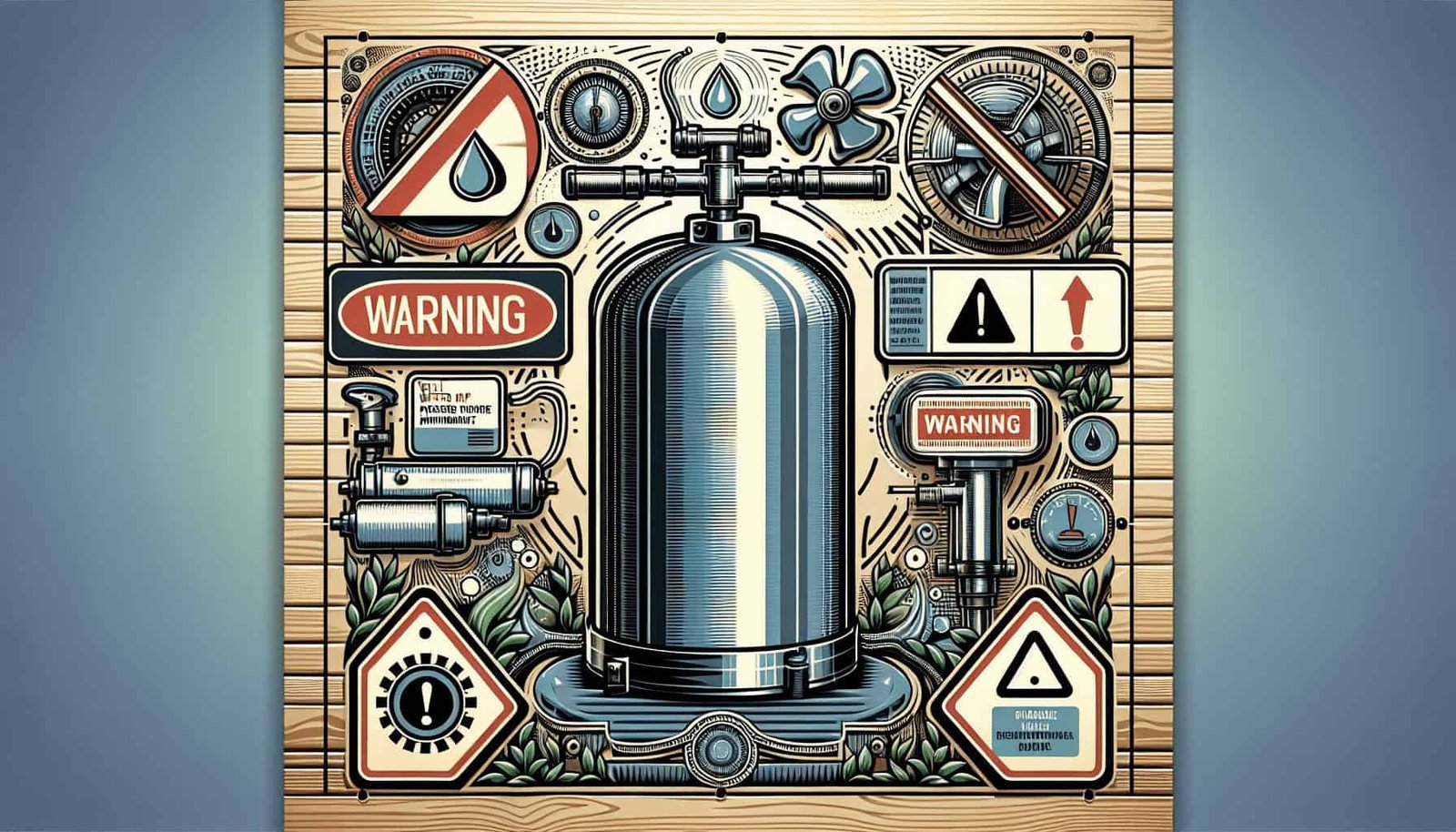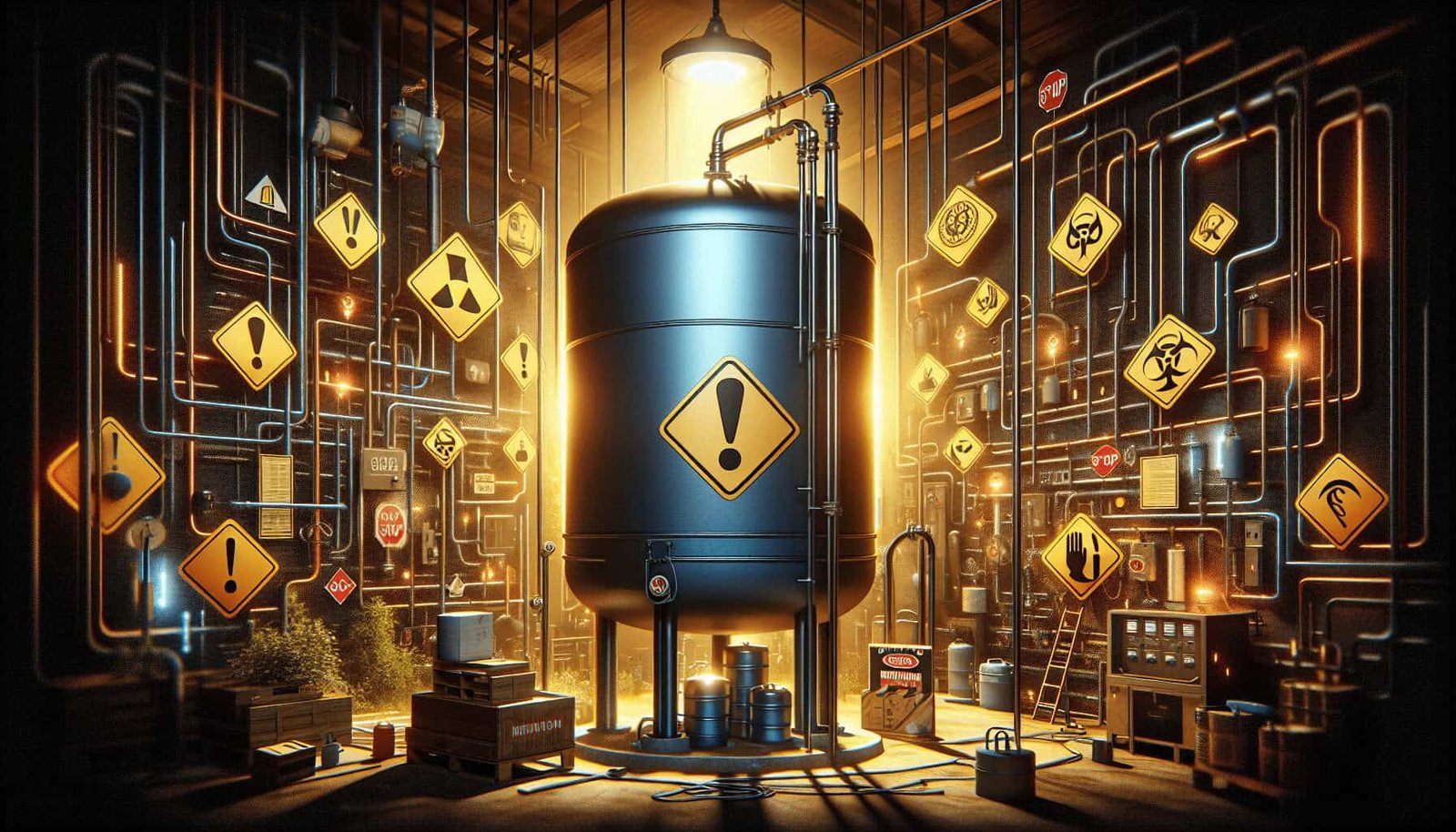Are you concerned about maintaining the safety of your well water pressure tank? Ensuring the proper maintenance of your well water pressure tank is crucial for maintaining a constant supply of clean and safe water. In this article, we will explore some essential guidelines to help you safeguard your well against safety issues related to pressure tank maintenance. By following these guidelines, you can ensure the longevity and efficiency of your well water system, while also prioritizing the safety of yourself and your loved ones.

Importance of Well Water Pressure Tank Maintenance
Maintaining water pressure in your well water pressure tank is crucial for the efficient functioning of your water supply system. A properly maintained tank ensures a steady, consistent flow of water to your faucets and fixtures. By keeping the water pressure at an optimal level, you can enjoy a strong, satisfying water stream for all your household needs.
Regular maintenance of your well water pressure tank also helps prevent equipment failure. Neglecting maintenance can lead to premature wear and tear of components, such as the pump and pressure switch. By addressing any issues early on, you can avoid costly repairs or even the need to replace your tank or other parts of your water system.
Another important reason to prioritize well water pressure tank maintenance is to avoid contamination. Over time, sediment, bacteria, and other contaminants can accumulate in the tank, posing a risk to the quality and safety of your water supply. By maintaining and cleaning your tank regularly, you can ensure that your water remains clean and free of harmful substances.
Common Safety Issues with Well Water Pressure Tanks
Several safety issues can arise if you neglect the maintenance of your well water pressure tank. Leaks and water damage are common problems that can occur if the tank is not properly maintained. A leaky tank can lead to water seeping into your home’s foundation or causing damage to surrounding structures. Not only can this result in costly repairs, but it can also create a breeding ground for mold and mildew.
Loss of water pressure is another safety issue you may face without proper maintenance. If the tank’s pressure is not regulated and maintained, you may experience weak or intermittent water flow. This can be frustrating and inconvenient, especially when you rely on a constant supply of water for daily activities such as showering, cooking, and cleaning.
Corrosion and rust are also common safety concerns associated with well water pressure tanks. If the tank is not regularly inspected and maintained, it can corrode over time, leading to weakened structural integrity. Corrosion can also cause rust particles to mix with the water supply, potentially affecting its taste, clarity, and safety.
Guidelines for Well Water Pressure Tank Maintenance
To ensure the longevity and optimal performance of your well water pressure tank, it is important to follow these maintenance guidelines:
Regular inspection and maintenance
Perform regular inspections of your well water pressure tank to identify any signs of damage or wear. Check for leaks, cracks, or signs of corrosion. Pay attention to the condition of the pressure switch, pump, and other components. Make sure all electrical connections are secure and functioning properly.
Checking for leaks and damage
Regularly inspect the tank for any signs of leaks or damage. Look for water stains, dampness, or pooling of water around the tank or nearby pipes. If you notice any leaks or damage, address them promptly to prevent further issues.
Flushing and cleaning the tank
Periodically flush and clean the tank to remove sediment, bacteria, and other contaminants. Follow the manufacturer’s guidelines for proper cleaning procedures. This may involve draining the tank and scrubbing the interior to remove any buildup. Keeping the tank clean will help maintain water quality and prevent the accumulation of harmful substances.
Ensuring Safety during Well Water Pressure Tank Maintenance
While performing maintenance on your well water pressure tank, it is important to take certain safety precautions to avoid accidents or injuries. Here are some key steps to ensure safety during maintenance:
Shutting off power and water supply
Before starting any maintenance tasks, shut off the power supply to the tank and turn off the water supply. This will prevent any electrical shocks or water accidents while working on the tank. Locate the appropriate circuit breaker and shut it off to cut off power to the tank. Additionally, close the main water valve to stop the water flow.
Using proper safety equipment
Wear appropriate safety gear to protect yourself during maintenance tasks. This may include gloves, safety glasses, and protective clothing. When working with cleaning solutions, ensure proper ventilation to avoid inhaling fumes. Always follow the manufacturer’s instructions and safety guidelines for any chemicals or tools used during maintenance.
Professional assistance and training
If you are unsure about performing maintenance tasks on your well water pressure tank, it is recommended to seek professional assistance. Well water systems can be complex, and a professional can provide expert knowledge and guidance to ensure proper maintenance. Consider attending training or workshops to enhance your understanding of well water pressure tank maintenance.

Preventing Contamination during Well Water Pressure Tank Maintenance
Maintaining the cleanliness and safety of your well water source is essential during tank maintenance. Here are some preventive measures to avoid contamination:
Protective measures for well water sources
Take precautions to protect your well water source from potential contamination during maintenance tasks. Ensure that the area around the well is clean and free from debris. Consider installing a protective cover or enclosure over the well to prevent the entry of insects, animals, or pollutants.
Disinfection procedures
After cleaning and flushing the tank, it is important to disinfect it to kill any remaining bacteria or pathogens. Follow the manufacturer’s instructions or consult a professional for recommended disinfection procedures. Use appropriate disinfectants and ensure that the tank is thoroughly rinsed afterward to remove any traces of chemicals.
Proper disposal of contaminants
When cleaning the tank or performing maintenance tasks, make sure to dispose of any contaminants properly. Do not pour chemicals or wastewater directly into the ground or water sources. Follow local regulations and guidelines for safe disposal of cleaning agents or other waste materials.
Troubleshooting Common Issues with Well Water Pressure Tanks
Inevitably, you may encounter some common issues with your well water pressure tank. Here are some common problems and troubleshooting steps:
Identifying and addressing leaks
If you notice any leaks, first identify the source of the leak. It could be a faulty valve, a cracked tank, or a damaged pipe. Promptly repair or replace any damaged components to stop the leak and prevent further water damage. If you are unsure of how to fix a leak, it is best to consult a professional for assistance.
Restoring water pressure
If you experience a loss of water pressure, check for any blockages in the pipes or valves. Sediment or debris can accumulate and restrict the flow of water. Clean or replace any clogged components to restore optimal water pressure. If the issue persists, there may be underlying problems with the pump or pressure switch that require professional attention.
Removing corrosion and rust
If you notice corrosion or rust on your well water pressure tank, it is important to address it promptly. Use appropriate cleaning agents and tools to remove the corrosion and prevent it from spreading. Consider applying a protective coating to prevent future corrosion. If the corrosion has severely damaged the tank, it may need to be replaced to ensure the safety and functionality of your water supply.

Benefits of Professional Well Water Pressure Tank Maintenance
While you can perform basic maintenance tasks on your well water pressure tank, there are several benefits to hiring a professional for comprehensive maintenance:
Expert knowledge and experience
Professionals have the expertise and experience to identify potential issues and provide effective solutions. They are trained to understand the intricacies of well water systems and can offer valuable advice on maintaining optimal performance and preventing future problems.
Efficient and thorough maintenance
Professional maintenance ensures that all aspects of your well water pressure tank are thoroughly inspected and maintained. They have the necessary tools and equipment to perform comprehensive cleaning, flushing, and repairs. This saves you time and effort while ensuring that your tank is in optimal condition.
Long-term cost savings
Investing in professional maintenance can help you avoid costly repairs or premature replacement of your tank and other water system components. The regular upkeep and early detection of issues can prolong the lifespan of your tank, ultimately saving you money in the long run.
Regular Maintenance Schedule for Well Water Pressure Tanks
To ensure the continued performance and longevity of your well water pressure tank, it is important to follow a regular maintenance schedule. Here is a general guideline for maintenance frequency:
Monthly inspections
Perform visual inspections of your well water pressure tank once a month. Check for signs of leaks, damage, or corrosion. Examine electrical connections and ensure all components are functioning properly. Address any issues promptly.
Biannual flushing and cleaning
Every six months, flush and clean your well water pressure tank. Follow the manufacturer’s guidelines or consult a professional for proper cleaning procedures. This will help remove sediment, bacteria, and other contaminants that may have accumulated.
Annual professional maintenance
Once a year, schedule a professional maintenance visit for your well water pressure tank. A professional can perform a comprehensive inspection, cleaning, and testing of the tank and other system components. They can address any issues and provide recommendations for optimal performance.

Signs that Indicate the Need for Well Water Pressure Tank Maintenance
Regular maintenance is crucial, but it is also important to be aware of signs that indicate the need for immediate attention. Here are some signs that your well water pressure tank may require maintenance:
Loss of pressure
If you are experiencing a sudden or gradual decrease in water pressure, it may indicate a problem with your tank or water system. Low water pressure can be due to a clogged pipe, a malfunctioning pressure switch, or other issues that require maintenance.
Strange noises or vibrations
Unusual noises or vibrations coming from your well water pressure tank can indicate a problem. These can be caused by a malfunctioning pump, loose components, or air in the system. Prompt maintenance is necessary to determine the source of the noise or vibration and address it accordingly.
Water discoloration
If you notice a change in the color or clarity of your water, it may signal a problem with your well water pressure tank. Discoloration can be a result of rust, sediment, or bacteria within the tank. Maintenance and cleaning are necessary to restore the water’s quality and safety.
Conclusion
Taking proactive measures for well water pressure tank maintenance is crucial to ensure a reliable and safe water supply. By maintaining water pressure, preventing equipment failure, and avoiding contamination, you can enjoy clean and consistent water flow in your home. Following guidelines for regular inspection, cleaning, and troubleshooting will help you address common issues and maintain the integrity of your well water pressure tank. Remember to prioritize safety during maintenance tasks by shutting off power and water supply, using appropriate safety equipment, and seeking professional assistance when needed. With proper maintenance and care, your well water pressure tank can provide you with years of reliable service and peace of mind.

